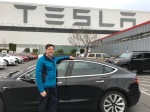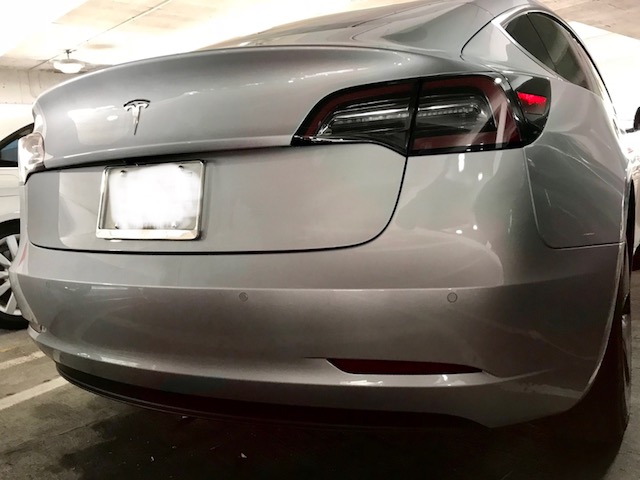Hey all! Sorry for the extended absence from my blog posts. The last 2 years working at ChargePoint have flown by and helped keep me at the forefront of the electric vehicle industry and especially EV charging. In past blog-posts, I’ve covered topics related to EV’s – mostly Tesla – and events in the State of Georgia. Today I want to share my reflections on the state of the electric vehicle industry and where I see it headed over the next 2-5 years. So here goes. Opinions are my own.
What’s Happening with car based EV’s?
EV’s are Still “Fixin’ to Get Ready” to be a Major Force in Light Duty Transportation. While EV’s are breaking the 2% of vehicle sales barrier, they have a very long way to go to become the dominant form of light duty transportation. Why? Because the mass market automotive OEMs (GM, Ford, Fiat, Nissan/Renault) continue to offer niche EV’s in declining car segments in North America and Europe. While the high end lux vehicles are going ‘all in on electric’ (Audi, BMW, Mercedes, Porsche, Volvo) they are still too small to effect a mass scale shift to electrified vehicles. And that leaves Tesla with it’s expensive and relatively narrow line of all electric vehicles to lead the industry and there are not enough cars coming out of Fremont (or Reno in the future) to make that happen.
What About Light Duty Trucks?
What will change all of this in North America? Light Duty Trucks! America is still the land of pick up and light duty trucks. After conducting training meetings in states like Texas and Florida, I got the attention of my audience when I showed a slide of the planned electric pick ups from Ford and GM and new entries from Michigan based Rivian. You start talking to a man about his truck and you are going to get his attention. Light duty trucks are perfect for electrification: remove the engine, drive train, gas tank and install one super large battery (think 150-250 kWh battery pack) and powerful electric motors at each of the four wheels, maintain towing capacity and luxo truck comfort and pricing ($70,000+) and you have the makings of a successful electric light duty truck offering. Fortunately, these vehicles are in the 12-24 month launch time horizon. Light duty trucks: game changer for electrified transportation.
What Role will Commercial Duty EV’s Play? A tremendous one!
A segment of the transportation industry that gets little notice but has a huge impact is commercial fleets. Think over the road tractor trailer trucks and municipal buses. Right now Tesla is in development testing of its Class 8 over the road semi truck with 400 all electric range at 100,000 pounds of payload, UPS is developing its own fleet of electrified delivery trucks. Add to that all electric buses offered by BYD and New Flyer that municipalities nationwide are purchasing for delivery in 6-24 months. Once the public starts seeing medium and heavy duty electric vehicles on the road they might start to be convinced that their much lighter vehicle could be an electric after all. And the charging infrastructure being developed for these vehicles will be massive and have a halo effect on light duty charging station installation growth.
What About Autonomous Driving?
Much digital ink is being spilled over the topic of autonomous driving. From where I sit (behind the wheel of a Tesla Model S Gen 1 MobilEye AutoPilot system in use since October 2015), US roads have a very long way to go to handle Fully Autonomous Driving (Level 5). While Alphabet and Tesla are at the forefront of Autonomous Driving vehicle technology, it is my considered opinion that it is not vehicle technology that limits Autonomous Driving. It is our ever deteriorating road beds, unpredictable weather and roadway lighting conditions, road construction and pedestrians that impede the progress of full self driving. It’s almost as if we’d be better served to create autonomous driving lanes than to try to create technology that can handle trillions of road conditions real time. I fully believe in driver assisted autonomous driving and absolutely love even my basic AP1 features but I am behind the wheel and can take over at a split seconds’ notice.
Will There Ever Be Enough Charging Stations to avoid Range Anxiety?
The answer depends on where and how far you drive. If you have a home charger installed in your garage and you have access to chargers at work or at retail locations where you drive, you will have plenty of charging stations to support your driving needs. With either the ChargePoint or PlugShare Apps you will find thousands of level 2 charging stations in the US and a rapidly growing number in Canada. With home charging, you can always leave your house in the morning on a full charge!
If you are driving between cities and states, then charging becomes more of a challenge and your trip planning skills will be fully used! If you own a Tesla part of the reason you bought it was to access their nationwide network of ‘superchargers’ (120-250kW output stations) or their ‘urban chargers‘ (72kW output) and other than California, you can usually get on a Tesla supercharger. Tesla has also installed ‘destination’ chargers at hundreds of hotels providing level 2 (full charge overnight).
If you own another make/model of EV, you will need to access to DC-Fast Charge networks across the US including: ChargePoint, EVGO, Electrify America, and Greenlots (Shell). You will need an account and network access card for each of these networks and need to know which DC Plug comes with your EV: Asian cars are CHAdeMO and NA/EU cars are CCS (combines a set of DC pins below the AC adapter). Charging session costs vary depending on DC fast charge station local and whether the station owner can charge for electricity (e.g. California) or only by time (e.g. Georgia). Your trip planning skills will be honed finely as you plan your route through DC fast chargers.
That wraps up my reflections on the state of the electric vehicle industry. Have a question or comment, use our comment form at the bottom of this post.



 On my last trip to the Bay area, I was lucky enough to score a rental of a brand new Tesla Model 3 through Turo, the “Air BNB” of personal owner car sharing. Over a four day, 312 mile rental, I had the opportunity to put the Model 3 through its paces traversing the highways and byways of Silicon Valley. This review continues my first blogpost of the Model 3:
On my last trip to the Bay area, I was lucky enough to score a rental of a brand new Tesla Model 3 through Turo, the “Air BNB” of personal owner car sharing. Over a four day, 312 mile rental, I had the opportunity to put the Model 3 through its paces traversing the highways and byways of Silicon Valley. This review continues my first blogpost of the Model 3: 






 Hartsfield-Jackson International Airport City of Atlanta Mayor Kaseem Reed has committed to the installation of 300 electric vehicle charging parking spots by the end of 2017. Sources indicate the charging infrastructure will be a mix of Level 1 charging stations, L1 plug-in outlets (owners can plug in their charging cordsets), Level 2 stations and even a few DCFC stations. Regardless, this is a HUGE step forward as the most notable gap for EV charging in metro Atlanta is the airport. The first 100 charging spots will be on-line by the end of 2016 with the remaining 200 coming on stream over the course of 2017.
Hartsfield-Jackson International Airport City of Atlanta Mayor Kaseem Reed has committed to the installation of 300 electric vehicle charging parking spots by the end of 2017. Sources indicate the charging infrastructure will be a mix of Level 1 charging stations, L1 plug-in outlets (owners can plug in their charging cordsets), Level 2 stations and even a few DCFC stations. Regardless, this is a HUGE step forward as the most notable gap for EV charging in metro Atlanta is the airport. The first 100 charging spots will be on-line by the end of 2016 with the remaining 200 coming on stream over the course of 2017.

 Stay tuned as we watch how the next major development – the almost $60 million VW settlement Fund [if the State accepts it], is to be administered in Georgia. You can be sure that more charging stations (and even Superchargers) are on their way as the 2017 Chevrolet BOLT, the 2018 Tesla Model 3, all new Nissan LEAF and that all-electric Audi extend the reach the electric vehicles throughout the State of Georgia and beyond.
Stay tuned as we watch how the next major development – the almost $60 million VW settlement Fund [if the State accepts it], is to be administered in Georgia. You can be sure that more charging stations (and even Superchargers) are on their way as the 2017 Chevrolet BOLT, the 2018 Tesla Model 3, all new Nissan LEAF and that all-electric Audi extend the reach the electric vehicles throughout the State of Georgia and beyond.




You must be logged in to post a comment.